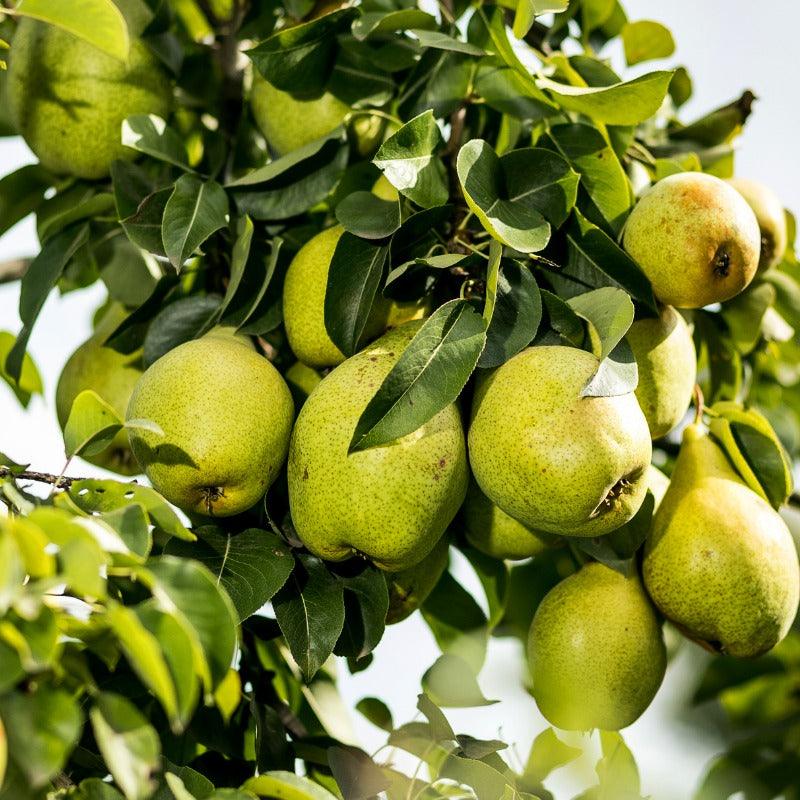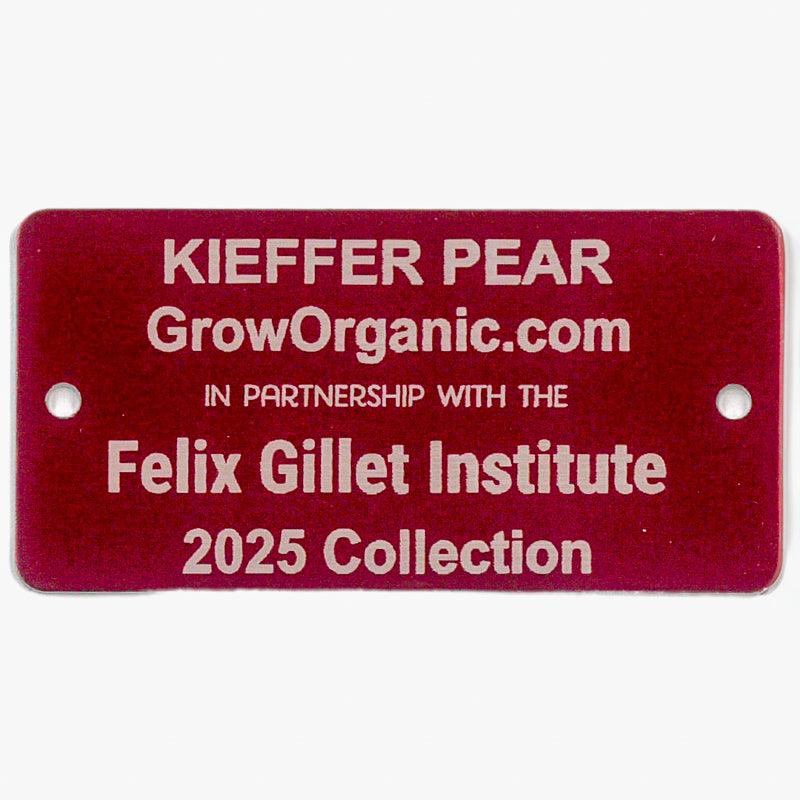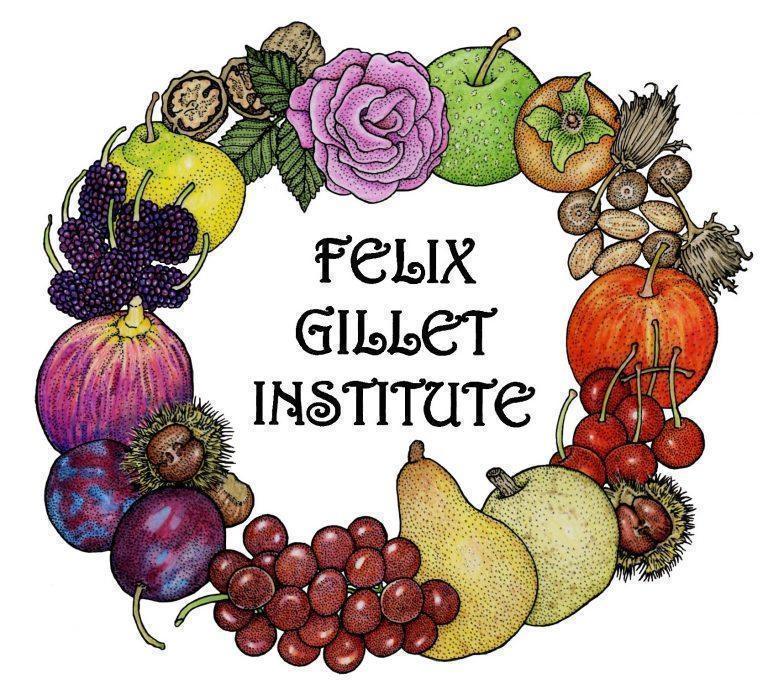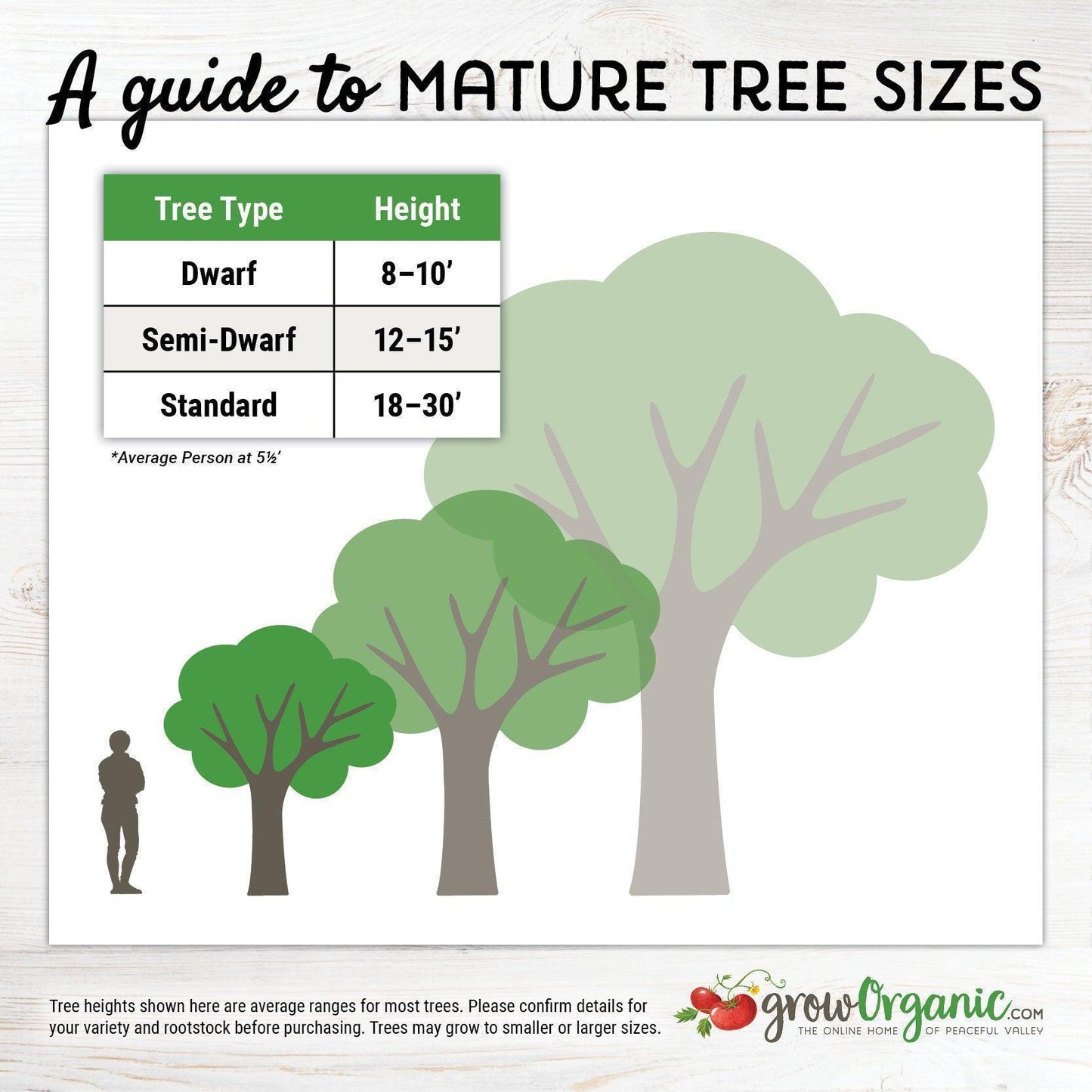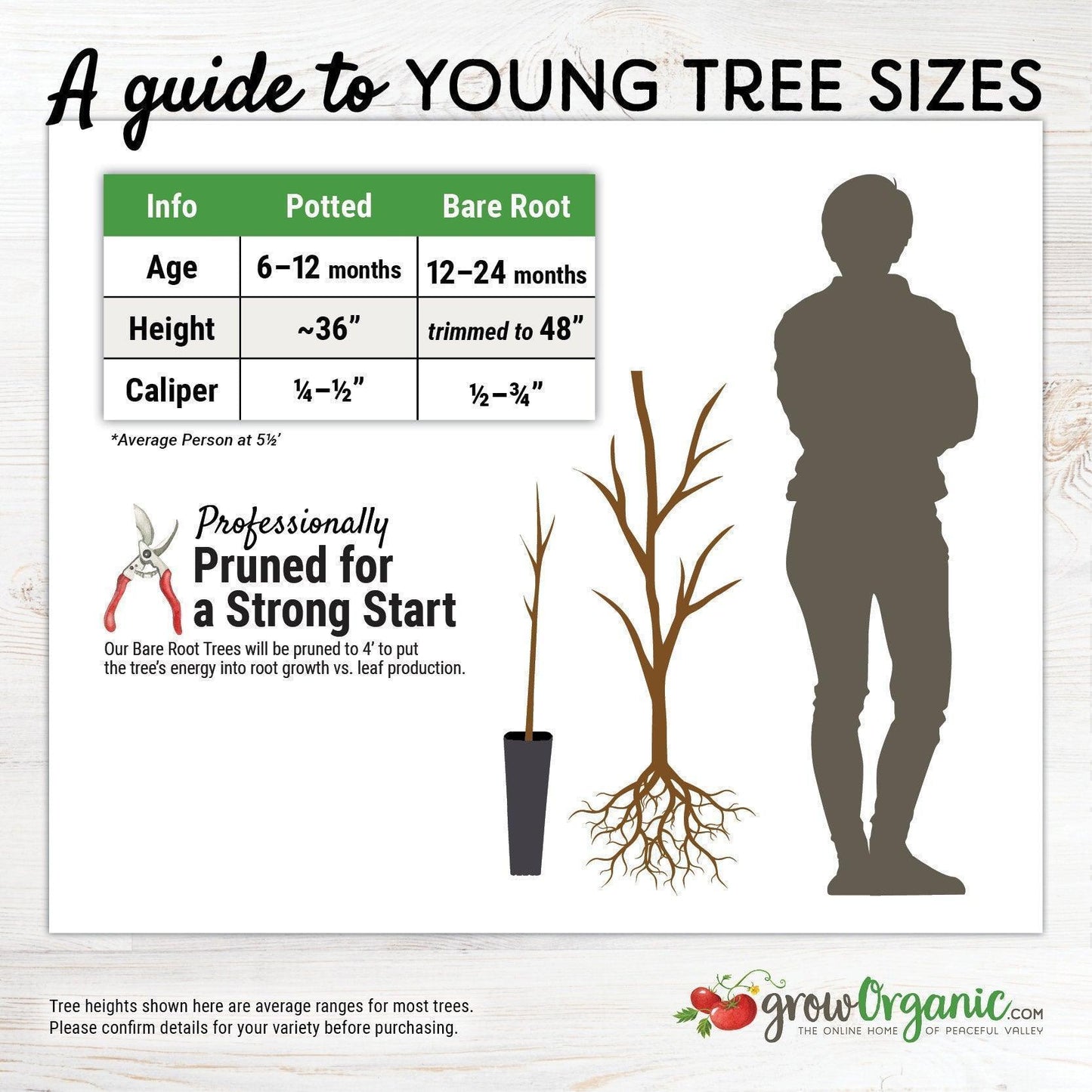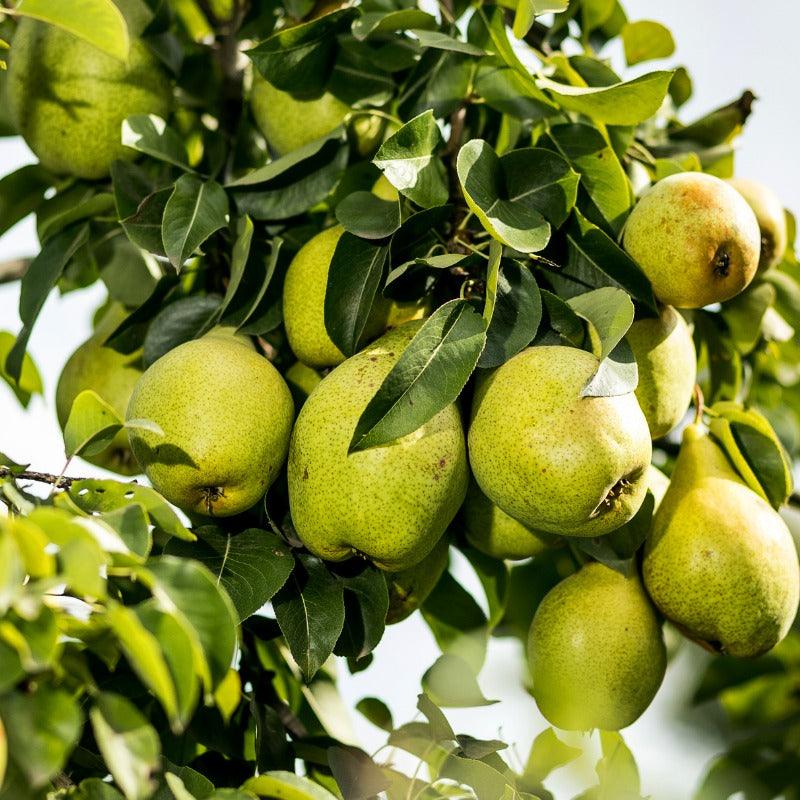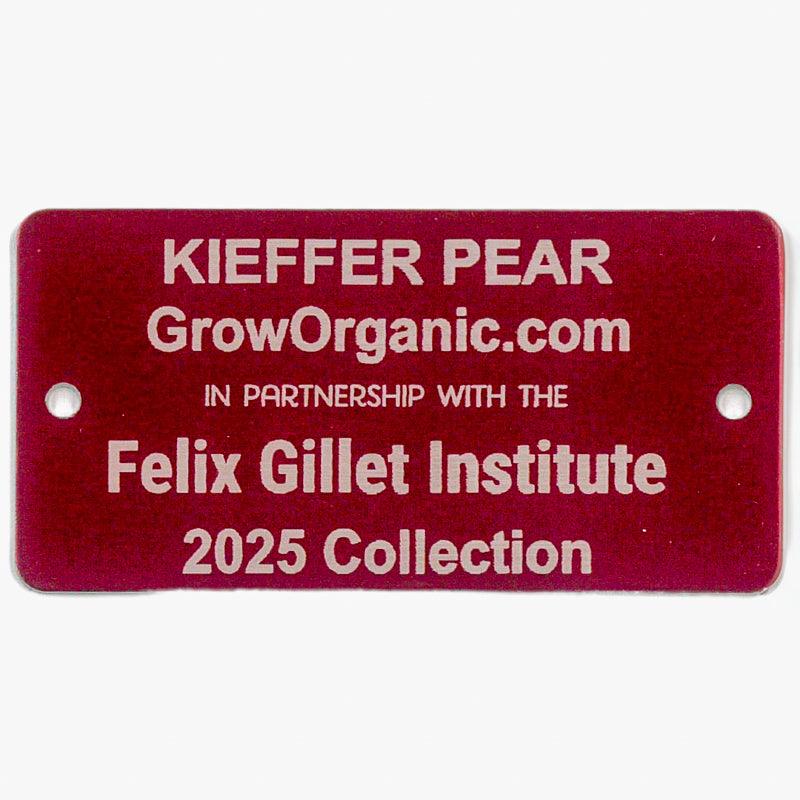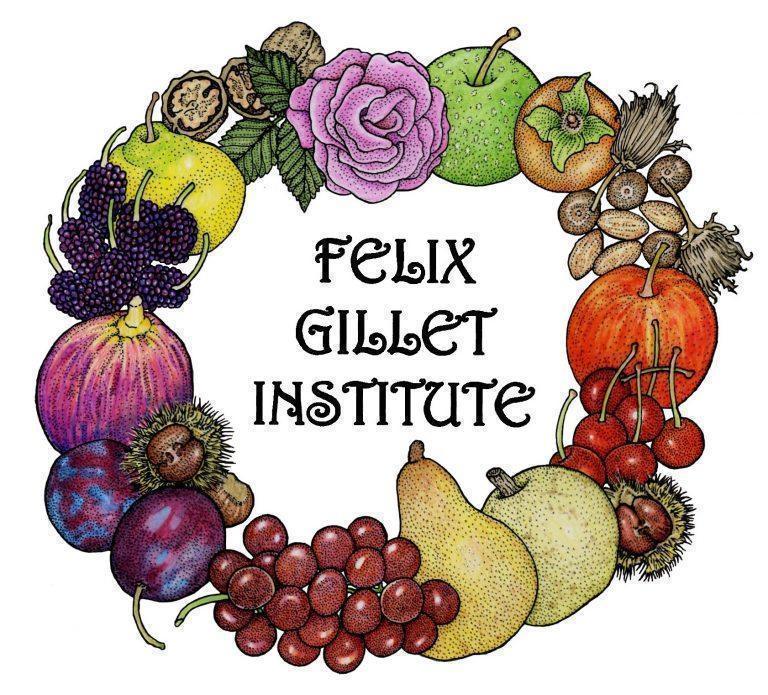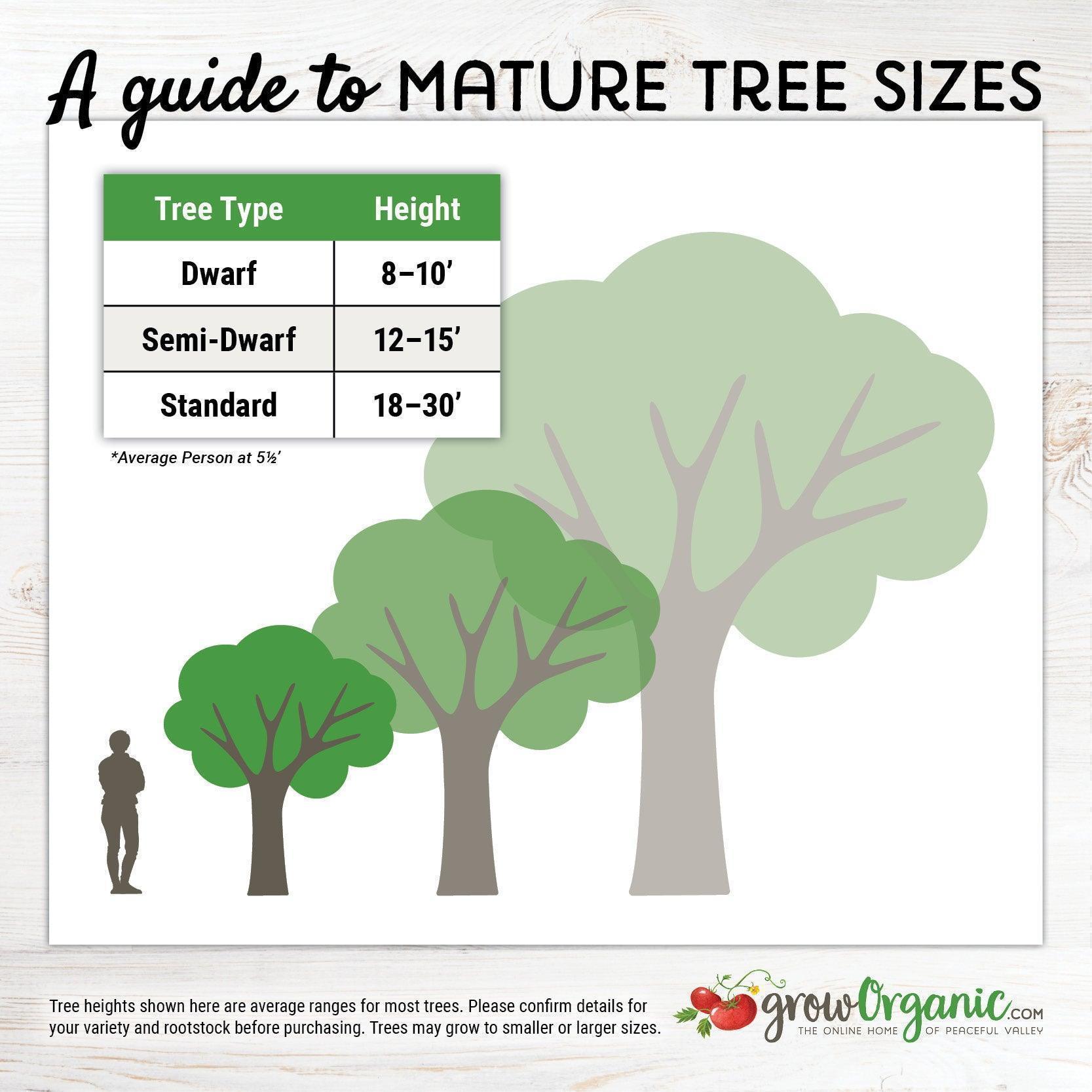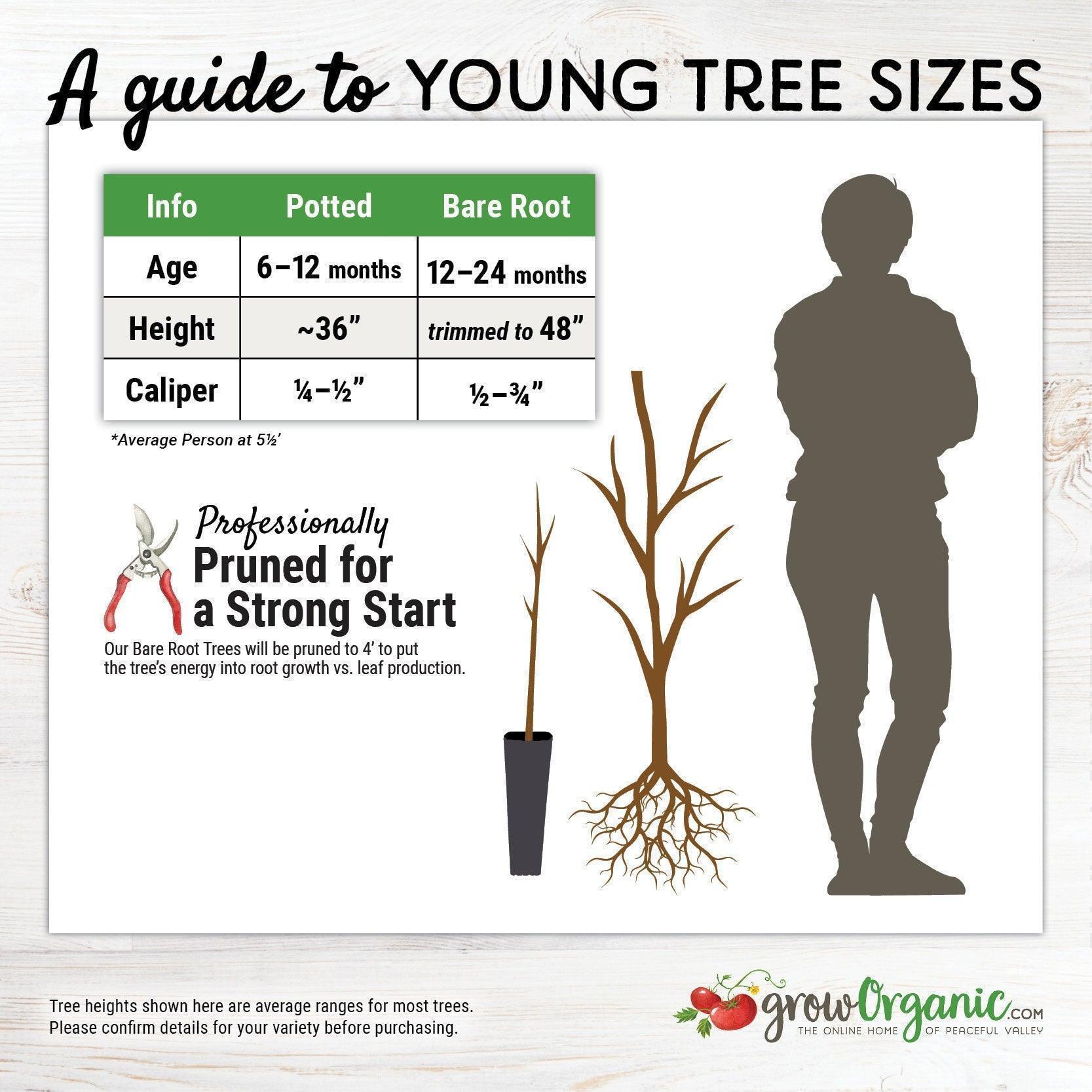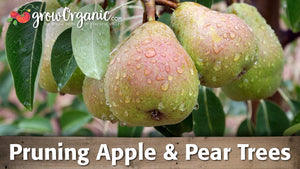Item Number: FT375
Kieffer Pear Tree
Crisp, Juicy, Coarse-Textured White Flesh
Every rare tree purchase supports historical orchard preservation
Limited availability—reserve up to 5 rare trees per order while supplies last
Each handpicked tree includes a durable etched metal display tag.
Semi Dwarf on OHxF333 GS Rootstock
The Kieffer Pear tree is a remarkable and resilient cultivar, known for its large, versatile fruit and historical significance. This pear tree, which originated as a chance cross between a European and an Asian pear on Peter Kieffer's farm near Philadelphia in 1876, has become a staple in many orchards due to its hardiness, productivity, and resistance to common pear tree diseases. The Kieffer Pear is highly valued not only for its fruit but also as a historical tree, with a legacy that stretches back to the late 19th century.
Historical Significance and Origin
The Kieffer Pear's story begins in the agricultural landscape of the late 1800s, a time when the demand for robust and reliable fruit trees was high. Peter Kieffer, a farmer near Philadelphia, discovered this unique pear tree as a seedling, likely the result of a natural cross between a European pear (Pyrus communis) and an Asian pear (Pyrus pyrifolia). The combination of these two types of pears resulted in a tree that inherited the best qualities of both parents: the crispness and resilience of the Asian pear and the melting, sweet flesh of the European pear.
The Kieffer Pear quickly gained popularity for its large, flavorful fruit and its ability to thrive in a wide range of climates and soil conditions. Its resistance to diseases such as fire blight and codling moth made it an especially valuable addition to orchards, where it could produce reliable harvests with minimal intervention. The Kieffer Pear's historical roots are also tied to Nevada City, California, a bustling agricultural hub during the Gold Rush era. The grandmother trees, still growing less than two miles from Felix Gillet's former nursery in Nevada City, are a testament to the longevity and vigor of this cultivar.
How to Grow a Kieffer Pear Tree
Growing a Kieffer Pear tree is relatively straightforward, thanks to its hardiness and adaptability. Whether you are an experienced orchardist or a beginner gardener, the Kieffer Pear can be a rewarding addition to your garden or orchard. Here are some key considerations for how to grow a pear tree like the Kieffer Pear:
- Site Selection: Kieffer Pear trees prefer full sun and well-drained soil. Choose a location that receives at least 6-8 hours of direct sunlight daily. The soil should be slightly acidic to neutral (pH 6.0-7.0) and well-drained to prevent root rot. Although Kieffer Pears can tolerate heavier soils better than some other pear varieties, ensuring good drainage will help the tree thrive.
- Planting: The best time to plant a Kieffer Pear tree is in the early spring or late fall when the tree is dormant. This allows the roots to establish themselves before the growing season begins. Dig a hole that is twice as wide and just as deep as the root ball. Place the tree in the hole, making sure that the graft union is above the soil level. Backfill the hole with soil, tamping it down gently to remove air pockets. Water the tree thoroughly after planting.
- Pollination: While Kieffer Pear trees are often considered self-fruitful, meaning they can produce fruit without a pollination partner, they will yield a more abundant harvest if another pear variety is planted nearby. Cross-pollination with a different pear tree can enhance fruit set and quality, making it a wise choice to plant a companion pear tree if space allows.
- Watering: Kieffer Pear trees require consistent moisture, especially during their first few years of growth. Water the tree deeply once a week, providing about 1-2 inches of water per week. As the tree matures, it becomes more drought-tolerant, but regular watering during dry periods will help maintain healthy growth and productivity.
- Fertilization: Fertilize the Kieffer Pear tree in early spring before new growth begins. Use a balanced, slow-release fertilizer or organic compost to provide the necessary nutrients. Avoid over-fertilizing, as excessive nitrogen can lead to vigorous vegetative growth at the expense of fruit production. A well-balanced fertilizer will support both the growth of the tree and the development of high-quality fruit.
- Pruning: Pruning is essential for maintaining the health and productivity of the Kieffer Pear tree. Prune the tree in late winter or early spring, before the buds break. Focus on removing dead, damaged, or diseased branches, as well as any branches that are crossing or growing inward. Shape the tree with an open, vase-like structure to ensure good air circulation and light penetration, which can help reduce the risk of disease and promote even ripening of the fruit.
- Pest and Disease Management: One of the standout features of the Kieffer Pear tree is its resistance to common pear tree diseases, such as fire blight and codling moth. However, it is still important to monitor the tree for pests and diseases. Implementing good cultural practices, such as proper spacing, pruning, and sanitation, can help prevent pest and disease issues. If necessary, organic or chemical controls can be used to manage any problems that arise.
Harvesting Pears
One of the unique characteristics of the Kieffer Pear is its long ripening period. The fruit begins to ripen at the end of September and can hang on the tree well into November, particularly in cooler climates or at higher elevations, such as at 2500 feet. When first picked, the pears have a crisp texture similar to an Asian pear. As they mature to a deep yellow, the flesh softens and becomes more like a Bartlett pear, offering the best of both worlds in terms of flavor and texture.
To harvest Kieffer Pears, gently lift the fruit and twist it slightly. If the pear detaches easily from the tree, it is ready to be picked. Pears should be harvested while still firm and allowed to ripen indoors, as they do not ripen fully on the tree. This method of harvesting ensures that the pears develop their best flavor and texture. Store the pears in a cool, dry place to allow them to ripen slowly. Once ripe, they can be eaten fresh, canned, or used in a variety of culinary applications.
Uses and Benefits
The Kieffer Pear is highly versatile and can be used in numerous culinary applications. Its firm, crisp flesh when first picked makes it an excellent choice for fresh eating, especially if you enjoy the texture of an Asian pear. As the fruit ripens and softens, it becomes perfect for canning, baking, or making preserves. The pears can also be used to make perry, a traditional pear cider that has been enjoyed for centuries.
In addition to its culinary uses, the Kieffer Pear tree is an excellent choice for permaculture gardens and sustainable landscapes. The tree is known for its vigor and productivity, often producing large harvests even in less-than-ideal conditions. Its resistance to diseases and pests, combined with its ability to thrive in a variety of climates, makes it a reliable and low-maintenance option for gardeners and orchardists alike.
Conclusion
The Kieffer Pear tree is a true gem in the world of fruit trees. Its historical significance, coupled with its exceptional fruit and robust growth habit, makes it a valuable addition to any orchard or garden. Whether you are interested in growing a pear tree for its delicious fruit, or you are drawn to the historical tree aspect of the Kieffer Pear, this cultivar is sure to exceed your expectations. With proper care and attention, the Kieffer Pear tree will reward you with bountiful harvests for many years to come.
For more information about different types of rootstocks and how they influence tree size and growth, see our Tree Rootstock Characteristics Chart.


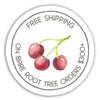
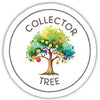
Check Your Zone Compatibility:
Compatible with your zone.
Growing Zone for

Our Guarantee To You
Since 1976, we've served our customers at every stage of growing. Please contact us at any time. We are happy to support and assist you.
Shipping Information
Shipping Information
Cannot ship to the following states: HI, AK, PR, GU, VI
Shipping Weight: 5.0 lb
Dimensions: 47.5"L x 7.3"W x 2.75"H
Features
Features
- Bare Root
- Self-fruitful
Characteristics
Characteristics
Planting & Care
Planting & Care
Useful Information
Useful Information
Guarantee
Guarantee
Limited Dormant Tree & Plant Guarantee
* Claim deadline is June 15th
We guarantee that your dormant tree or plant will arrive in good, viable condition. If your tree arrives in substandard condition, notify us within 3 days of delivery. Please email pictures of the box, inside packaging, the tree and its roots to helpdesk@groworganic.com. We will investigate your claim and process a request to exchange or refund the damaged product.
If your dormant tree or plant has not grown new leaves by June 15th, you may be eligible for our Limited Dormant Tree & Plant Guarantee. This guarantee provides for a store credit for the purchase price of the tree, excluding shipping. Please see the Instructions below.
Important Dates:
- April 1st Dormant trees/plants must be planted in the ground
- May 15th Perform scratch test, if no new leaves have grown
- June 15th Deadline to apply for a dormant tree/plant credit
All required documentation must be received by June 15th for your claim to be considered. Claims or documentation received after June 15th will be denied, without exception. Instructions listed below
Terms and Conditions
We cannot guarantee that your tree or plant will remain alive and healthy after it is received, or bear fruit as there are too many variables in your environment that are beyond our control (i.e. soil preparation, weed and pest control, proper irrigation, chill hours, compatible hardiness for your growing zone, proper choice of pollinator, extreme weather, rodent damage, disease, etc.).
We cannot guarantee that we will be able to provide a replacement tree/plant of the same species either that same growing season or in future years. Customers are responsible for all shipping fees associated with replacement trees and plants.
If we determine that the tree you purchased directly from us is not viable, we will issue you a store credit (not a refund) for the purchase price of the affected dormant tree or plant. Shipping is not included in the dormant tree/plant guarantee. Store credits can be used to purchase any product we sell and are valid for use only until July 1st of the following year.
Historically, 98% of our dormant trees and plants grow and thrive when they have been cared for and planted using our growing guides. Dormant trees and plants must be planted in the ground by April 1st in order to be eligible for credit. If the ground in your area is still frozen solid, you may temporarily plant your tree or plant in a pot.
Potted, non-dormant trees or plants are excluded from this guarantee as they are not dormant at the time of shipment. Evergreen trees such as citrus, avocado and olive trees are not available for credit under the Dormant Tree and Plant Guarantee.
Instructions
We guarantee that your dormant fruit tree or plant will leaf out, if you care for it according to our growing guides. In the unlikely event that your dormant tree or plant does not have leaves by May 15th, follow these simple steps to apply for a store credit:
Before you call or email, please perform a “scratch test” to determine if the tree or plant is still alive. This video shows how to check for live tissue under the bark. Scratch tests need to be done a few inches above and below the graft.
Green Cambium Layer / Living Trees
If the cambium layer under the bark is green, give your tree a little more time. It is still alive, but hasn’t come out of dormancy yet. Check to make sure that it is getting the right amount of deep root water, enough sunlight and that the weather is warm enough for that type of tree/plant to come out of dormancy. Every tree has its own personality and will come out of dormancy at different times. Be sure to submit the required documentation listed below by June 15th, if it doesn’t grow leaves.
Brown Cambium Layer / Dead Trees
If the scratch test shows a brown cambium layer or if your dormant tree/plant doesn’t have leaves by June 1st, please email us at helpdesk@groworganic.com. All required documentation listed below must be received by June 15th for your claim to be considered. To be considered for the guarantee claim, all required documentation must be received by June 15th. Incomplete submissions will be denied.
Required Documentation
- Order number
- Name of dormant tree/plant and the quantity affected
- Photos of each tree or plant showing:
- The roots (tree or plant must be pulled out of the ground)
- The scratch test areas
- The entire tree/plant
We reserve the right to not issue credit for items that have already been replaced. We also reserve the right to require photographic evidence that the tree/plant was not killed by root rot, rodent or mechanical damage.
Share
